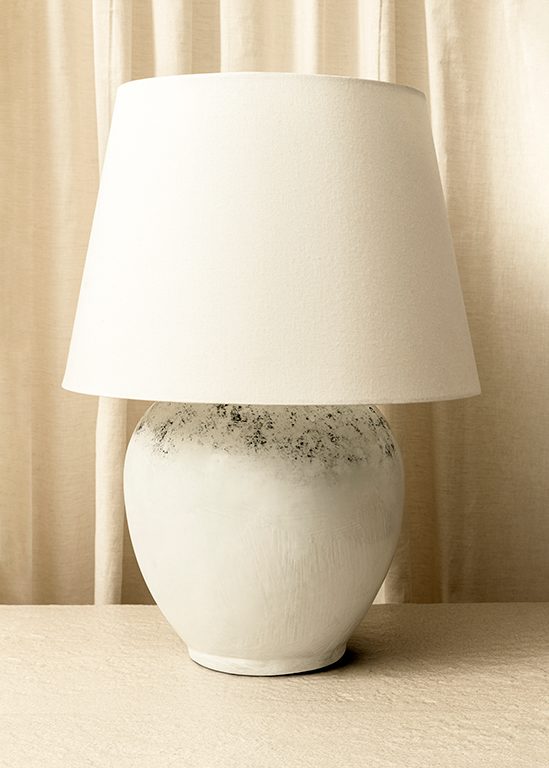Lamp shades are an essential aspect of any room’s design. They add a sense of warmth, texture, and style to the space, and choosing the correct lamp shade can make all the difference. However, creating the perfect lampshade isn’t always as easy as it seems. Many common mistakes can occur when trying to DIY your own lampshade, leaving your lighting looking unprofessional. From selecting the wrong materials to not measuring correctly, these errors can be costly and time-consuming to fix. This article will explore the top 10 common DIY lamp shade mistakes you need to avoid to achieve a polished and stylish look for your lighting.
Importance of avoiding common mistakes
DIY projects are a great way to add a personal touch to your home decor. However, it’s essential to learn from the common mistakes others have made before starting your project. Avoiding these errors will save you time, money, and frustration, and ensure that your lampshade looks professional. Whether you’re new to DIY or an experienced maker, it’s crucial to understand these common mistakes to avoid them.
Mistake #1: Choosing the wrong size or shape
One of the most common mistakes in DIY lamp shade projects is selecting the wrong size or shape for the lamp base. When choosing a lampshade, you need to consider the proportions of the lamp base and the room’s size. A shade that is too large or too small can look awkward and unbalanced. It’s also essential to consider the lamp’s height, as a lampshade that is too tall or too short can affect the lamp’s functionality.
To avoid this mistake, measure the height and width of your lamp base and choose a shade that is proportional to the base. If you’re unsure, choose a shade that is slightly larger than the base, as this will provide a more balanced look. Also, consider the room’s size when choosing a lampshade. A large room requires a larger shade, while a smaller room needs a smaller one.
Mistake #2: Not considering the type of lighting
Another common mistake is not considering the type of lighting required for a room. Different rooms require different types of lighting, and the type of lampshade you choose will affect the light emitted. For example, a lampshade made of a thick fabric will not emit as much light as a shade made of a lighter fabric. A shade that is too opaque can also reduce the amount of light in a room.
To avoid this mistake, consider the type of lighting required for the room before choosing a lampshade. If you need a lot of light, choose a shade made of lighter fabric or a translucent material. If you want a softer, more ambient light, choose a shade made of thicker material or a more opaque material.
Mistake #3: Using the wrong fabric
Choosing the wrong fabric can make or break your lampshade project. Some fabrics look great on a lampshade, while others don’t. For example, heavy materials such as velvet or corduroy may look luxurious but can be difficult to work with and may block light. Lighter fabrics such as cotton or linen are easier to work with and allow more light to pass through.
To avoid this mistake, choose a fabric that is suitable for your lampshade project. Consider the amount of light you want to emit, the room’s decor, and the style of the lamp base. Avoid fabrics that are too thick or too thin, as they may not work well with your project.
Mistake #4: Not properly measuring and cutting the fabric
Measuring and cutting the fabric is one of the most critical steps in creating a lampshade. If you don’t measure and cut the fabric correctly, the shade will not fit correctly, and the final product will look unprofessional. It’s essential to take your time and ensure that the measurements are precise before cutting the fabric.
To avoid this mistake, measure the circumference of the top and bottom of the lampshade frame and add an extra inch to the length. This will ensure that the fabric fits snugly around the frame. Use a rotary cutter or sharp scissors to cut the fabric, and ensure that the edges are straight. Double-check the measurements before cutting to avoid any errors.
Mistake #5: Not using proper adhesive or glue
Using the wrong adhesive or glue can cause your lampshade to fall apart over time. It’s essential to use the right type of adhesive for your project to ensure that the lampshade stays together and lasts for years to come. Using the wrong adhesive can also affect the appearance of the final product, leaving it looking unprofessional.
To avoid this mistake, choose an adhesive that is suitable for your fabric and lampshade frame. Fabric glue, hot glue, and spray adhesive are popular choices. It’s also essential to follow the manufacturer’s instructions for the adhesive to ensure that it sets correctly.
Mistake #6: Ignoring the importance of symmetry
Symmetry is essential in lampshade design. If your lampshade is not symmetrical, it will affect the overall appearance of the lamp and the room. An asymmetrical lampshade can also make the room look unbalanced and disjointed.
To avoid this mistake, take your time when measuring and cutting the fabric. Ensure that the fabric is centered and symmetrical around the frame. Double-check the measurements before cutting the fabric to ensure that everything is precise.
Mistake #7: Not taking into account the lamp base
The lamp base is an essential element in lampshade design. If you don’t take the lamp base into account, you may end up with a lampshade that doesn’t fit correctly or looks out of place. The lamp base’s style, color, and size should be considered when choosing a lampshade.
To avoid this mistake, consider the lamp base’s style, color, and size before choosing a lampshade. If the base is ornate or detailed, choose a lampshade that is simple and understated. If the base is a bold color, choose a lampshade that complements the color. Ensure that the lampshade fits correctly on the base and that it doesn’t look out of place.
Mistake #8: Not paying attention to the finishing touches
Finishing touches are essential in any DIY lamp shade project, including lampshade design. Not paying attention to the finishing touches can leave your lampshade looking incomplete and unprofessional. Finishing touches include trimming the excess fabric, ensuring that the edges are straight and even, and adding a decorative trim or ribbon.
To avoid this mistake, take your time when finishing your lampshade. Trim the excess fabric and ensure that the edges are straight and even. Add a decorative trim or ribbon to give the lampshade a finished look.
Mistake #9: Not testing the lampshade before use
Not testing the lampshade before use can be a costly mistake. If the lampshade doesn’t fit correctly or doesn’t emit enough light, you may need to start over or make adjustments. It’s essential to test the lampshade before using it to ensure that it fits correctly and emits the right amount of light.
To avoid this mistake, test the lampshade before use. Place it on the lamp base and turn on the light to ensure that it emits the right amount of light and fits correctly. Make any necessary adjustments before using the lampshade.
Mistake #10: Not seeking inspiration or guidance
Not seeking inspiration or guidance can lead to a lack of creativity and ideas. If you’re unsure how to create a lampshade or need inspiration, there are plenty of resources available. From online tutorials to books and magazines, there are many ways to get inspired and learn new techniques.
To avoid this mistake, seek inspiration and guidance before starting your project. Look for online tutorials, read books and magazines, and ask for advice from others who have completed similar projects.
Conclusion and final tips for a professional-looking DIY lampshade
Creating a professional-looking DIY lamp shade requires careful planning, attention to detail, and a bit of creativity. By avoiding these common mistakes, you can ensure that your lampshade looks polished and stylish. Remember to choose the right size and shape, consider the type of lighting, use the right fabric and adhesive, measure and cut the fabric correctly, pay attention to symmetry and finishing touches, test the lampshade before use, and seek inspiration and guidance. With these tips in mind, your DIY lamp shade project is sure to be a success.
Click to Learn More


